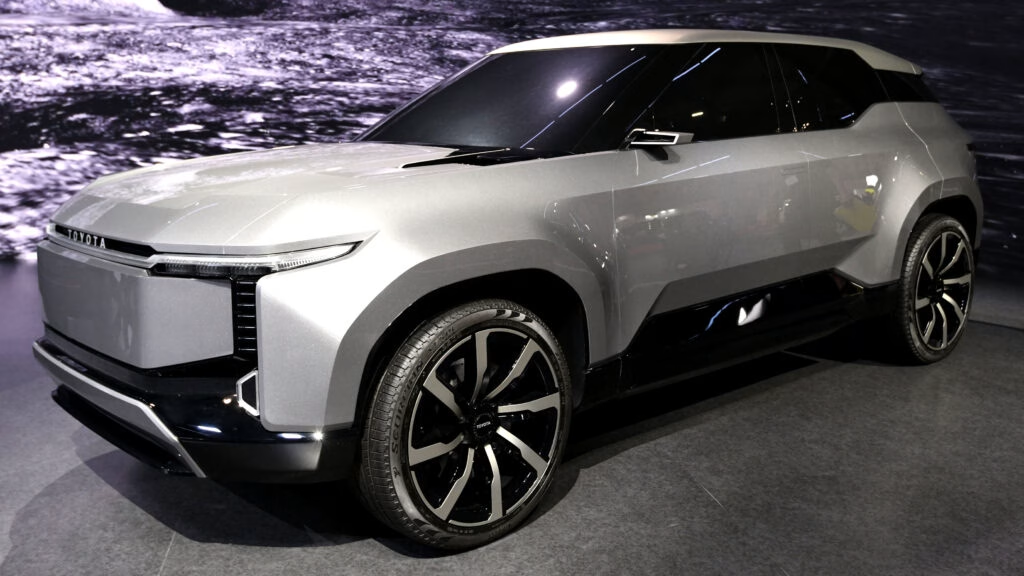Why is Toyota Building Three-Row Electric SUVs in Kentucky?
Toyota’s decision to build two new three-row electric SUVs at its Kentucky plant isn’t just a headline—it’s a strategic pivot that speaks volumes about where the auto market is headed. For years, Toyota has hinted at electrifying its most iconic models, and now it’s putting rubber to the road with plans for a Land Cruiser-inspired EV and a RAV4-based electric SUV, both with three rows of seats. The move comes as sedan sales continue to slide in the US, while crossovers and SUVs keep climbing the charts. By shifting focus to larger, family-friendly electric vehicles, Toyota is positioning itself to meet American tastes head-on—and sidestep tariffs that can hit imported models hard.
What Do We Know About the Electric Land Cruiser and RAV4?
Let’s break down what’s actually coming. According to sources close to the project, the new EVs will be “based on the Land Cruiser and RAV4.” That could mean they’re direct electric versions of those models, or it could simply be a branding play—using familiar names to help buyers feel at home with something totally new under the hood.
The Land Cruiser Se concept, first unveiled in 2023, offers a pretty clear glimpse at Toyota’s vision. Imagine a sleek, three-row electric SUV that sits alongside the retro-styled two-row Land Cruiser and the beefier 300 Series sold overseas. It’s a modern twist on a classic, designed to appeal to families who want space, capability, and zero tailpipe emissions. Meanwhile, the RAV4-based EV is arguably even more crucial. The RAV4 is already the third-best-selling vehicle in America this year, according to industry sales data. If Toyota can bottle that magic in an electric, three-row package, it could be a game-changer for the brand’s EV ambitions.
How Will These New EVs Impact Toyota’s US Lineup?
This isn’t just about adding a couple of new models. Toyota’s US lineup is in the midst of a major shakeup. The company is moving production of the next-generation Lexus ES sedan back to Japan—a sign that it’s reading the tea leaves on declining sedan demand. At the same time, it’s doubling down on SUVs and crossovers, which now account for more than half of all new vehicle sales in the US, according to the latest data from the National Automobile Dealers Association.
By building these electric SUVs in Kentucky, Toyota can keep prices competitive (no import tariffs) and ensure a steady supply for American buyers. It’s also a nod to the growing expectation that automakers invest in US manufacturing jobs as they transition to electric vehicles. For context, Toyota’s Kentucky plant is already one of the largest auto manufacturing facilities in the world, so it’s well-equipped to handle the scale these new models will require.
Are There Any Surprises or Risks in Toyota’s Strategy?
Toyota’s approach is classic “slow and steady wins the race.” While rivals like Tesla and Ford have gone all-in on EVs, Toyota has been more cautious, rolling out hybrids and plug-in hybrids while keeping a close eye on consumer demand. Some critics have called this strategy too conservative, but it’s hard to argue with Toyota’s track record for reliability and market savvy.
One potential curveball: the rumored compact SUV often referred to as the FJ Cruiser. While it’s less likely to be one of the three-row models, there’s buzz that it could come in both electric and hybrid flavors. If Toyota brings back the FJ in a modern, electrified form, it could tap into nostalgia while appealing to younger buyers looking for adventure-ready vehicles that don’t guzzle gas.
What Does This Mean for Families Shopping for an Electric SUV?
For families, the arrival of three-row electric SUVs from Toyota is big news. Until now, options in this segment have been limited, with most EVs offering only two rows or coming from luxury brands with sky-high price tags. Toyota’s reputation for value, reliability, and dealer support could make these new models the go-to choice for buyers who want to go electric without sacrificing space or peace of mind.
Plus, a RAV4-based electric SUV could finally give Toyota the EV hit it’s been searching for. The current bZ4X hasn’t exactly set the world on fire, but a three-row RAV4 EV? That’s a recipe for mainstream success if Toyota gets the pricing and range right.
How Does This Fit Into the Broader Shift Toward Electric Vehicles?
Toyota’s move is part of a much bigger trend. According to the International Energy Agency, global EV sales topped 14 million units in 2023, up 35% from the previous year. In the US, electric SUVs are the fastest-growing segment, and consumer surveys show that more than half of new car shoppers are considering an EV for their next purchase.
By electrifying its most popular nameplates and building them in the US, Toyota is signaling that it’s ready to compete in the next era of mobility. It’s also hedging its bets by keeping production flexible—if demand for sedans rebounds, it can always adjust. But for now, the writing’s on the wall: families want bigger, greener vehicles, and Toyota plans to deliver.
The Big Takeaway
Toyota’s push to build three-row electric SUVs in Kentucky isn’t about chasing trends—it’s about reading the market and making smart, calculated moves. The result? A lineup that’s ready for the future, with familiar names and new technology working hand in hand. The big takeaway? Winning in the EV game isn’t about perfection—it’s about smarter adjustments. Start with one change this week, and you’ll likely spot the difference by month’s end.

